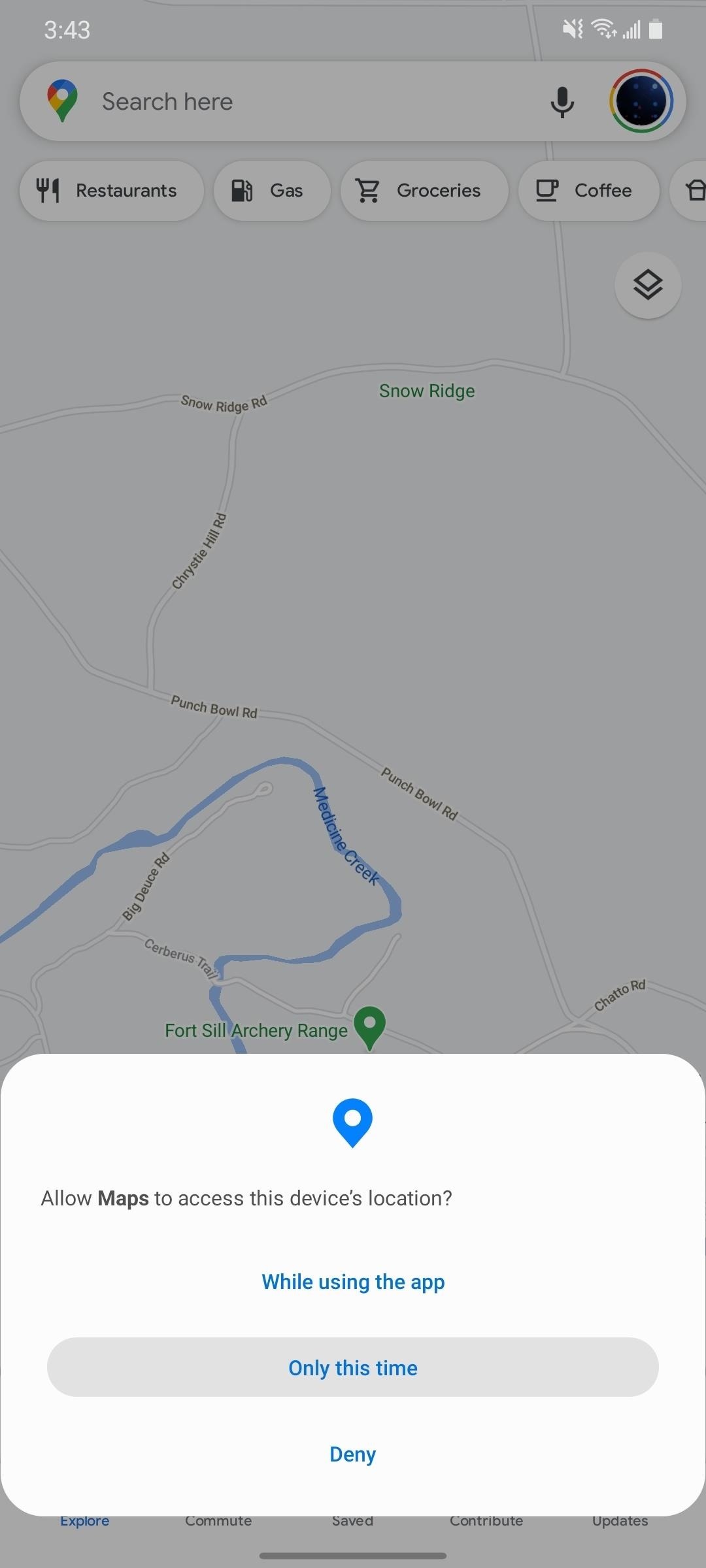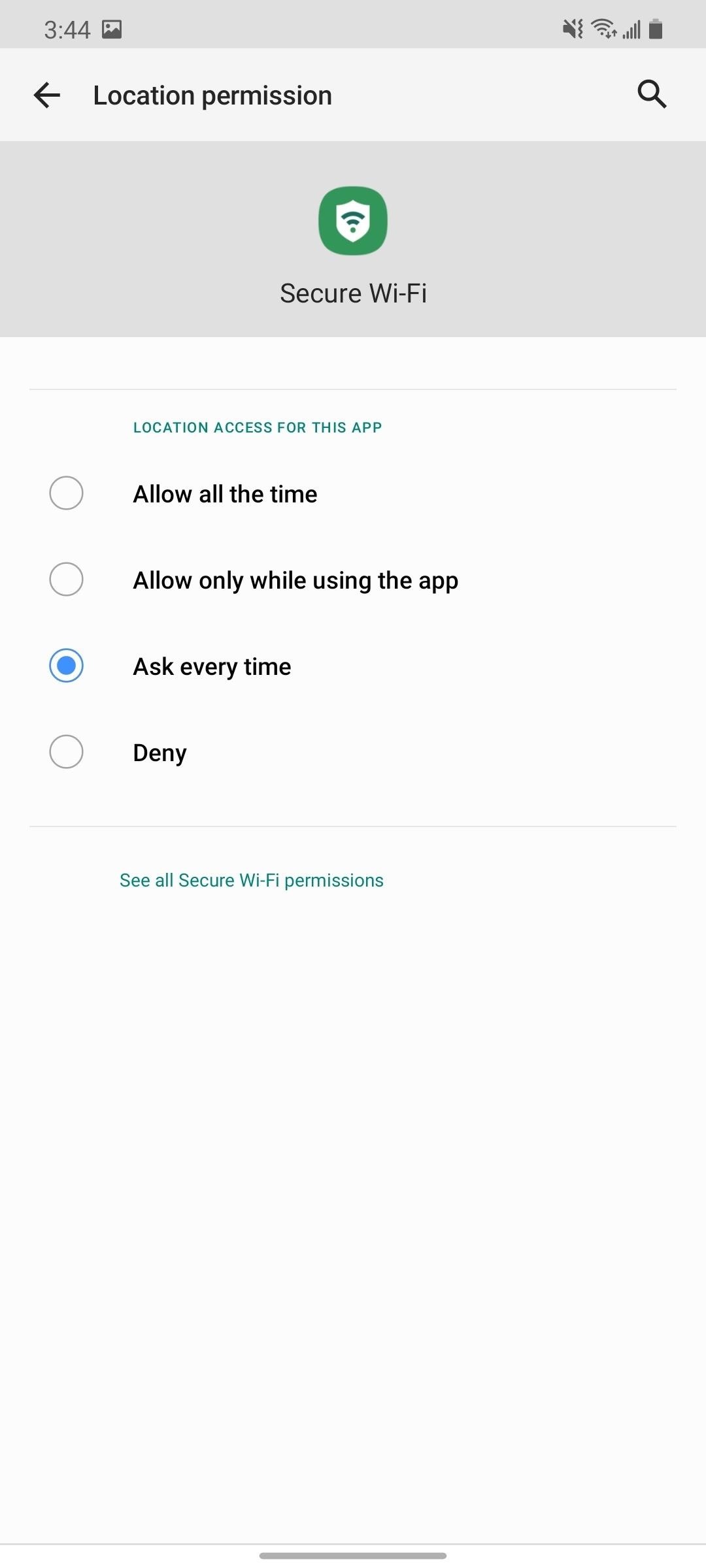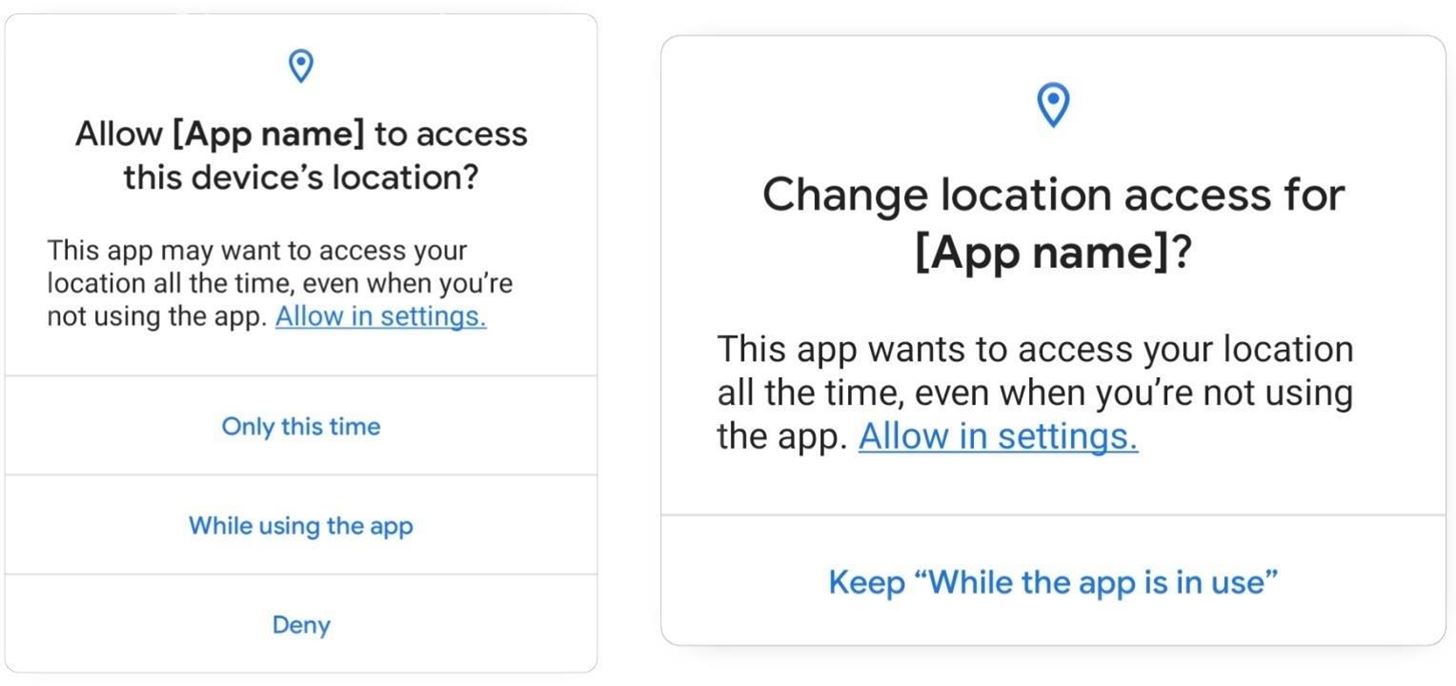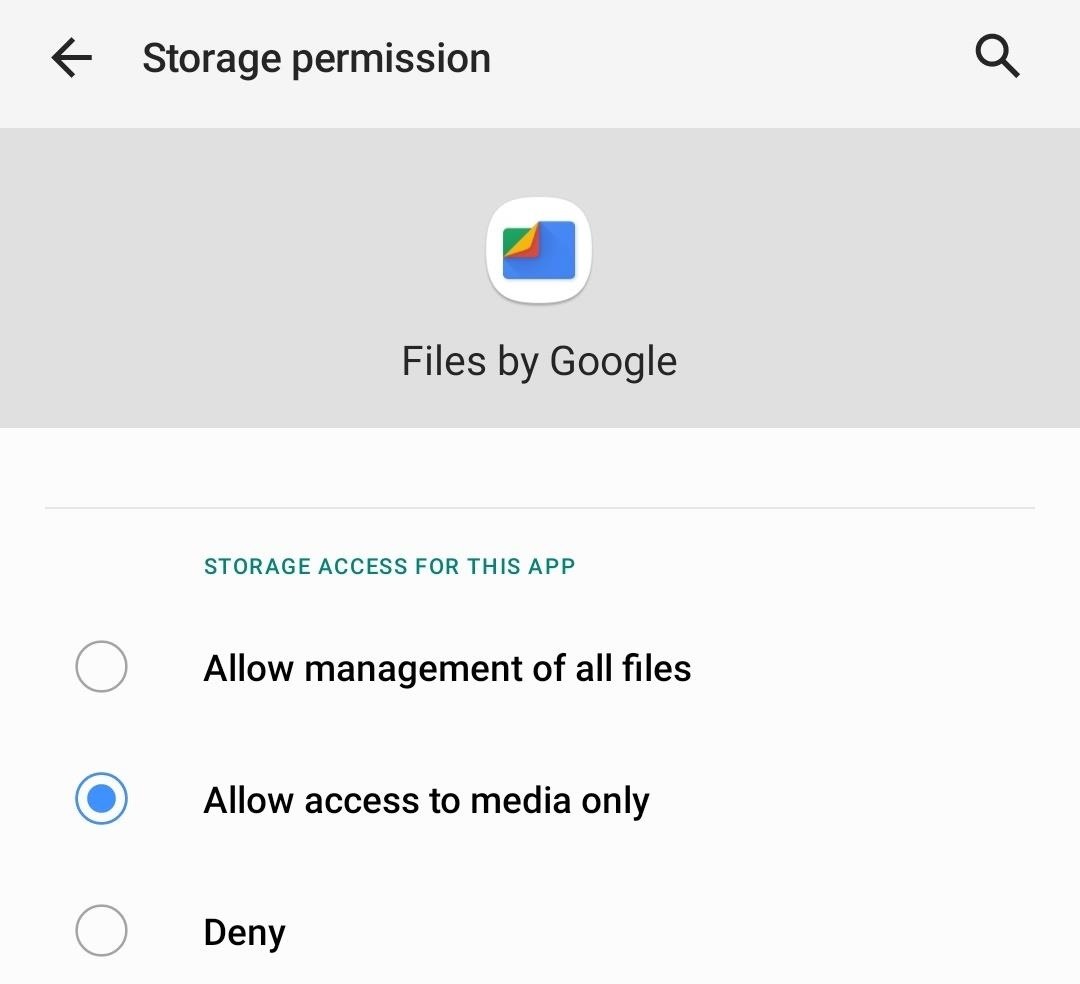Google’s been on a mission to improve the privacy and security of Android lately, and Samsung’s always been at the forefront in these areas. As a result, One UI 3.0, which is based on Android 11, is the most secure OS version to ever hit Galaxy phones thanks to few key changes and new features.
A large focus of One UI 3.0 is app permissions, with the goal of giving users more control over their personal data. In addition, the latest version of Android adds new protections that happen in the background. These changes and APIs will better protect your Galaxy smartphone, without you having to do a single thing. Here are some of the more noteworthy ways One UI 3.0 makes Galaxy devices safer.
- Don’t Miss: All the New Features & Changes in Samsung’s One UI 3.0 Update
1. Temporary Permissions
You can now give apps access to a permission temporarily. The camera, microphone, and location have a new option in the permission request prompt: “Only this time.” When chosen, the app is given one-time access, but as soon as it closes, it must request the permission again in order to use it again.


2. Background Location Access Must Be Granted Manually
In One UI 3.0, “Allow all the time” is no longer an option in the permission prompt when an app asks for access to your location. In prior versions, this was used to grant background location access.
Apps can still receive this permission, just not in a single tap. You can either go to “Permission manager” in Settings to grant background location access manually, or apps can add an extra button to the permission prompt that takes you to the system Settings menu, where you can then grant access. Definitely an improvement for casual users who don’t understand the implications of these settings.

3. Auto-Resetting Permissions
In One UI 3.0, when an app hasn’t been used for multiple months, its permissions can be revoked automatically. Using the new “Remove permissions if app isn’t used” toggle found within an apps’ permission page (the app must target Android 11 to see this toggle), all granted permission will change to “Deny.”

4. Protection Against App Queries
In prior versions of One UI, any app installed on your device could ask the system for the full list of other installed apps on your device. This allowed for apps to check whether you had a necessary second app or an app that it didn’t want to interact with.
However, this information has been abused by some apps as a method of tracking users and collecting data, so in One UI 3.0, this policy has changed. Apps requesting a list of installed apps will see a filtered list of installed apps by default. If the information isn’t provided on this list, they can query specific elements.
5. Repetitive Permission Requests Are Auto-Blocked
Instead of receiving the same permission request for a permission you denied, in One UI 3.0, if you deny a permission twice, the UI treats it as “don’t ask again.” You will no longer be prompted for the permission, but you can still manually enable it in the system Settings.
6. Spam Protection
The FCC has an authentication tool called STIR/SHAKEN that verifies phone numbers. They’ve mandated that all US carriers implement this system into their network to help combat robocalls and spam.
In One UI 3.0, call screening apps can access the verification status from STIR/SHAKEN and use this information to improve the blocking of unwanted calls.
7. Scoped Storage in Full Effect
First implemented in One UI 2.0, Scooped Storage changed the way apps interacted with the file system. It limited app access to only a few folders on the internal storage, so apps couldn’t view your other files. However, it broke too many apps, forcing Google to create a temporary workaround.
In One UI 3.0, apps now must use Scooped Storage. For file managers, One UI 3.0 has a new “All Files Access” permission, allowing them to operate as they did in prior versions. However, the app must meet certain requirements to qualify for this permission. All other apps are limited to “Media Only Access.”

8. No More Assignable Default Camera
In One UI 3.0, users can no longer set a default camera. While you can still use third-party camera apps and the camera features built into apps such as Snapchat, when an app requests to use a camera app, it must use the phone’s preinstalled camera app. This was done to prevents apps from stealing your location by reading geotags in your pictures.
9. Disable Automatic USB Audio Routing
There is a new entry in Developer Options called “Disable USB audio routing.” When you connect an audio device to your phone via USB, it will disable the automatic routing of audio to that device.

10. Better Protection with Tracking Location
When an app needs to access antenna characteristics to improve tracking accuracy, One UI 3.0 has a few limitations to protect your privacy. First, the API which allows the app to access this information is specific only to the device model. Second, the user must grant location permission for the app to gather this information.
Hot Deal: Set up a secure second phone number and keep your real contact details hidden with a yearly subscription to Hushed Private Phone Line for Android/iOS, 83%–91% off. It’s a perfect second-line solution for making calls and sending texts related to work, dating, Craigslist sales, and other scenarios where you wouldn’t want to give out your primary phone number.
“Hey there, just a heads-up: We’re part of the Amazon affiliate program, so when you buy through links on our site, we may earn a small commission. But don’t worry, it doesn’t cost you anything extra and helps us keep the lights on. Thanks for your support!”











